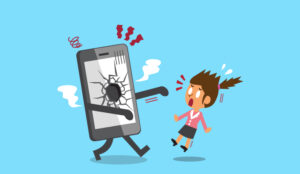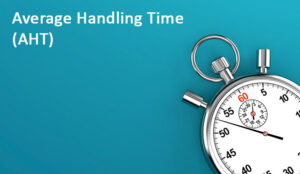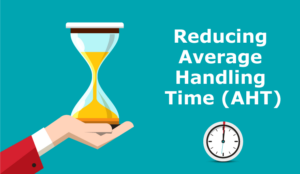Frank Sherlock of CallMiner discusses ways of to improving the customer experience through analytics, as opposed to tracking Average Handling Time (AHT).
I see a lot of chatter on my various social feeds around Average Handle Time (AHT). The major point of debate is that AHT is now a useless metric for understanding how effective you are at measuring customer experience (CX). And not just CX, but using it to measure effective customer journey maps, NPS, CSAT, or Customer Effort Score, or some other voice of the customer metric.
Whilst I don’t disagree with the importance of customer experience and having effective customer journeys, I do not believe that AHT is a resource planning metric only and offer my view that organisations should really be tracking AHT as a measure of CX. Let me explain.
I am constantly amazed as the opportunities that are presented to organisations to gain real insight into what is actually happening when consumers/customers are talking to the organisations who provide products and services to them.
In almost all cases there are great opportunities to understand the AHT and so improve the CX. It’s not always the case that analytics points to opportunities to reduce AHT either, sometimes the opposite is true.
Below, I present five examples of how you can better the customer experience by using contact centre analytics, instead of focusing on AHT.
Example 1
Why are customers calling you in the first place? Analytics will help to identify call reasons and can point to problems or issues on the customer journey downstream, which if addressed meant the call did not need to happen in the first place.
In a survey with UK and US customers, CallMiner asked why they called into the call centre and the reasons on both sides of the pond were typical technical issue, billing question, adding or cancelling service. But over 40% of respondents said they wanted an agent to listen to them.
Example 2
A CallMiner customer recently shared for a new project, product and process and were surprised when their assumption that lower AHT would result in optimal outcomes, was proven wrong.
In fact, their analytics revealed that their best customer contact outcomes were almost two minutes longer than calls with less ideal outcomes! They discovered the agents who took more time explaining the virtues of the product or service, setting the right expectation for the process and closing the calls properly had higher close rates, lower cancellation and less compliance risk as well.
Example 3
CallMiner see examples of clumsy call flow, unnecessary transfers from one agent to another, the agents lacking the training to be able to handle objections quickly and effectively, hold or silent time whilst the agent does a look up of data that should be readily available, confusing verbiage on the agent script that requires repeating and confirming, poor audio quality, agents speaking too quickly and needing to repeat themselves regularly. These unnecessarily drive up AHT.
Example 4
Absence of objective training and development. Traditional QM sampling might only uncover a very small element of what is really happening on the calls.
Unless you can analyse 100% of the audio and provide objective feedback to each agent based on consistent trends, you will never really be able to improve the agent interactions and the overall contact centre performance.
Example 5
In today’s “one call can make or break the relationship” your call centre agents need to be multi-skilled and empathetic people who are capable of handling complex tasks and emotionally charged situations. They not only need, but deserve, to be provided the best possible tools, insight, coaching and guidance to be able to deliver what consumers expect.

Frank Sherlock
Organisations who address these insights get optimum AHT, frictionless engagement and operational savings. So in summary, AHT does matter. Great customer experience depends on reducing customer effort and one element of this is the time it takes them (and you) to get what they need done.
There are opportunities to optimise AHT, but these opportunities might not be visible without effective speech analytics. Only by understanding what is happening on your customer interactions will you really be able to positively impact both experience and AHT.
This blog post has been re-published by kind permission of CallMiner – View the Original Article
For more information about CallMiner - visit the CallMiner Website
Call Centre Helper is not responsible for the content of these guest blog posts. The opinions expressed in this article are those of the author, and do not necessarily reflect those of Call Centre Helper.
Author: CallMiner
Published On: 29th Jan 2019 - Last modified: 30th Jan 2019
Read more about - Guest Blogs, CallMiner






 CallMiner is the leading cloud-based customer interaction analytics solution for extracting business intelligence and improving agent performance across all contact channels.
CallMiner is the leading cloud-based customer interaction analytics solution for extracting business intelligence and improving agent performance across all contact channels. 












